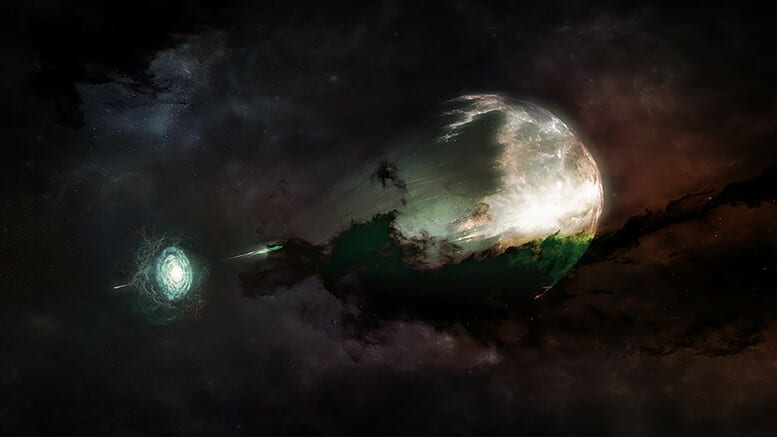Northwestern and Radboud University in the Netherlands have recorded millimeter-wavelength light from an explosion caused by the merger of a neutron star with another star.
To record the data, astrophysicists used the Atacama Large Millimeter/submillimeter Array (ALMA), an international observatory operated by the National Science Foundation’s National Radio Astronomy Observatory (NRAO). The research will be published in an upcoming issue of the Astrophysical Journal Letters.
Wen-fai Fong, assistant professor of physics and astronomy at Weinberg College, is the principal investigator for the ALMA program. Fong is also a key member of the Center for Interdisciplinary Exploration and Research in Astrophysics (CIERA). Other Northwestern coauthors include Alicia Rouco Escorial, Genevieve Schroeder, Jillian Rastinejad, Charles Kilpatrick, Kate Alexander, and Anya Nugent.
“This short gamma-ray burst was the first time we tried to observe such an event with ALMA,” said Fong. “Afterglows for short bursts are very difficult to come by, so it was spectacular to catch this event shining so brightly. After many years observing these bursts, this surprising discovery opens up a new area of study, as it motivates us to observe many more of these with ALMA and other telescope arrays in the future.”
“After a decade of observing short GRBs, it is truly amazing to witness the power of using these new technologies to unwrap surprise gifts from the universe.”
Learn more in Northwestern Now’s article, “Explosive neutron star merger captured for first time in millimeter light.”

